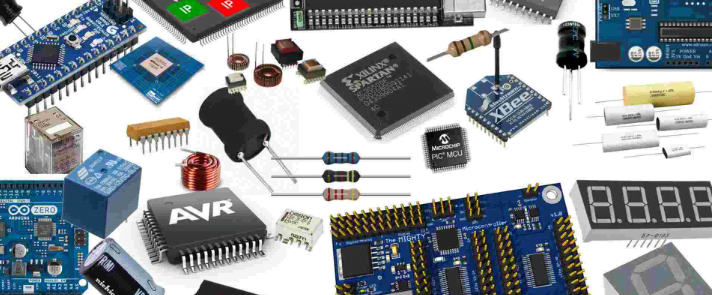In the intricate world of electronics, the quality of components can make or break a project. As such, selecting the right electronic components supplier is paramount. From ensuring product quality to timely delivery, the choice of supplier impacts the efficiency and reliability of your operations.
This comprehensive guide dives deep into the nuances of selecting the ideal electronic components supplier, offering valuable insights and practical tips to empower your decision-making process.
Understanding Electronic Components
Electronic components are the building blocks of modern technology, ranging from resistors and capacitors to diodes and transistors. These components play a pivotal role in the functionality and performance of electronic devices, making their quality a non-negotiable aspect. Navigating through the myriad of options requires a fundamental understanding of each component’s purpose and characteristics.
Factors to Consider When Choosing Electronic Components Supplier
Quality of Components
- High-quality components are essential for ensuring the reliability and longevity of electronic devices.
- Look for suppliers with stringent quality control measures and certifications such as ISO 9001.
Reliability and Reputation
- Reputation speaks volumes about a supplier’s reliability and commitment to customer satisfaction.
- Seek recommendations from industry peers and evaluate online reviews and testimonials.
Range of Components Offered
- A diverse product portfolio allows for one-stop shopping convenience and flexibility in sourcing components.
- Assess whether the supplier offers both standard and specialized components to meet your specific requirements.
Read More | Ultimate Guide to B2B Suppliers in the United States – Tips & Trends
Pricing and Bulk Discounts
- Cost-effectiveness is crucial, but it should not come at the expense of quality.
- Inquire about bulk discounts and negotiate pricing terms to optimize your procurement strategy.
Lead Times and Delivery Options
- Timely delivery is imperative to meet project deadlines and prevent production delays.
- Evaluate the supplier’s shipping capabilities and inquire about expedited delivery options if needed.
Customer Service and Support
- A responsive and knowledgeable customer support team can expedite issue resolution and enhance overall satisfaction.
- Prioritize suppliers that offer technical assistance, warranty support, and after-sales services.
Top Electronic Components Supplier in the Market
Digi-Key Electronics
- Renowned for its vast inventory of electronic components and prompt delivery.
- Offers competitive pricing and excellent customer service, backed by years of industry experience.
Mouser Electronics
- Known for its extensive product selection and user-friendly online platform.
- Provides robust technical support and comprehensive design resources for engineers and designers.
Arrow Electronics
- A global leader in electronic component distribution with a strong focus on innovation and sustainability.
- Offers value-added services such as custom packaging and supply chain solutions to streamline procurement processes.
How to Find the Right Electronic Components Supplier for Your Needs
1. Assessing Your Requirements
- Identify your project specifications, including component specifications, quantity requirements, and budget constraints.
2. Researching Potential Suppliers
- Utilize online directories, industry forums, and trade publications to compile a list of potential suppliers.
- Evaluate each supplier based on the aforementioned criteria and narrow down your options accordingly.
3. Asking for Samples or Test Orders
- Request samples or place small test orders to assess the quality of components and the supplier’s service capabilities.
Read More | Navigating the World of Bulk Suppliers in America: A Comprehensive Guide
4. Evaluating Supplier Performance
- Monitor key performance indicators such as lead times, product quality, and customer service responsiveness.
- Solicit feedback from internal stakeholders and incorporate their input into the supplier evaluation process.
5. Negotiating Terms and Agreements
- Negotiate pricing terms, payment terms, and contractual agreements to ensure a mutually beneficial partnership.
- Clarify expectations regarding product quality, delivery schedules, and dispute resolution mechanisms.
Tips for Working Effectively with Electronic Components Supplier
1. Maintaining Clear Communication
- Establish open lines of communication with your supplier to address any concerns or issues proactively.
- Provide clear specifications and expectations to minimize misunderstandings and ensure alignment.
2. Building a Strong Relationship
- Cultivate a collaborative relationship with your supplier based on trust, transparency, and mutual respect.
- Foster regular communication and seek opportunities for continuous improvement and innovation.
3. Being Proactive in Addressing Issues
- Address any issues or discrepancies promptly to prevent them from escalating into larger problems.
- Work closely with your supplier to implement corrective actions and preventive measures as needed.
4. Staying Updated on Industry Trends
- Stay abreast of emerging technologies and industry trends to anticipate future demands and opportunities.
- Leverage your supplier’s expertise and insights to stay ahead of the curve and gain a competitive edge.
Common Mistakes to Avoid When Choosing Electronic Components Supplier
- Sacrificing Quality for Lower Prices: Prioritize quality over cost to mitigate the risk of product defects and performance issues down the line.
- Overlooking the Importance of Reliability: Choose suppliers with a proven track record of reliability and consistency to minimize supply chain disruptions.
- Failing to Consider Long-Term Partnership Potential: Look beyond short-term gains and evaluate suppliers based on their long-term compatibility and strategic alignment.
- Ignoring Feedback and Reviews: Pay attention to customer feedback and reviews to gauge the supplier’s reputation and performance accurately.
Future Trends in Electronic Components Supply Chain
- Impact of Emerging Technologies: The proliferation of IoT, AI, and other advanced technologies is reshaping the landscape of electronic components manufacturing and distribution.
- Shifts in Manufacturing and Distribution Processes: Industry 4.0 initiatives are driving automation, digitization, and optimization across the supply chain, resulting in increased efficiency and agility.
- Sustainability Initiatives: Sustainable sourcing practices, waste reduction efforts, and eco-friendly packaging solutions are gaining traction as companies prioritize environmental responsibility.
Conclusion
Choosing the right electronic components supplier is a strategic decision that can have a profound impact on your business’s success. By prioritizing quality, reliability, and partnership potential, you can forge strong relationships with suppliers that propel your projects forward. Armed with the insights and tips provided in this guide, you’re equipped to navigate the complex supplier landscape with confidence and clarity.
